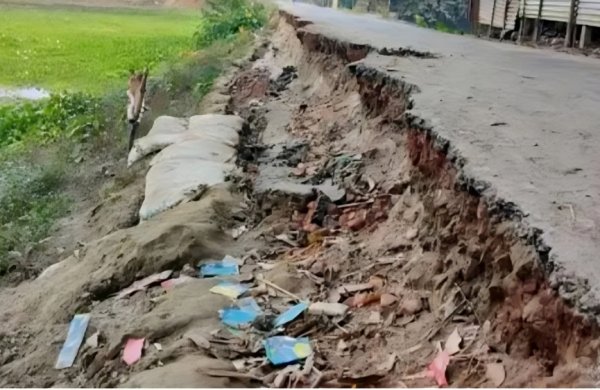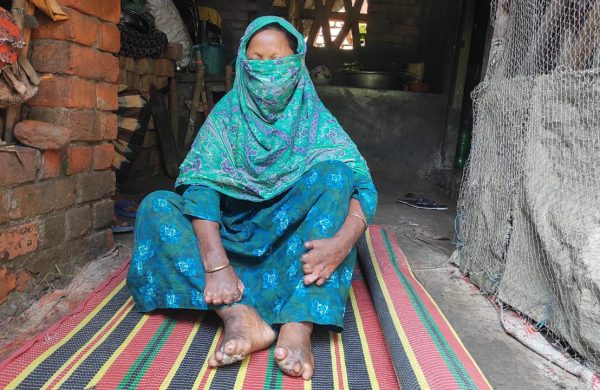Seven elephant deaths in one year in Ukhiya and Teknaf
- Update Time : Tuesday, February 4, 2025

TDS Desk:
A total of 34 Rohingya refugee camps have been established, destroying 7 thousand acres of forestland in the Ukhiya and Teknaf sub-districts of Cox’s Bazar. Consequently, five elephant corridors and over 15 water reservoirs have been completely blocked. As a result, more than 60 elephants in this forested region are facing severe food and water shortage.
Over the past year, seven elephants have died due to various causes, including electric wire traps set by humans, gunfire, accidents and disease. Among these, two deaths occurred in Teknaf, three in Ramu and two in Eidgaon and Chakaria. Over the last seven years, a total of 22 elephants have died. Simultaneously, in the past six years, elephant attacks have resulted in 135 human fatalities.
According to Md. Monirul Islam, Assistant Conservator of Forests (ACF) of the Teknaf –Ukhiya circle under under the Cox’s Bazar South Forest Division, the current elephant population in Cox’s Bazar is 203, including 25 calves. Among these, 37 elephants reside in the forests of Teknaf, while 30 elephants inhabit the forests of Ukhiya. Due to deforestation and the construction of Rohingya refugee camps, these 67 elephants are under at extreme risk.
Monirul Islam said that an elephant needs to walk approximately 87 kilometres daily. However, due to the establishment of refugee camps within the forested areas, the elephants in Teknaf are unable to migrate towards Ukhiya and vice versa. Consequently, many elephants are dying from diseases, malnutrition and electrocution caused by human-set traps.
FIVE BLOCKED CORRIDORS
According to the forest department, there are eight elephant corridors in Cox’s Bazar, five of which are located in Ukhiya and Teknaf. Forest officer Monirul Islam stated that, due to the establishment of refugee camps, three corridors in Kutupalong of Ukhiya have remained blocked for the past seven years. Additionally, two corridors at the Ghumdhum border have been closed following construction of barbed-wire fencing by Myanmar. For elephant conservation, it is essential to reopen these corridors and ensure the availability of water in the hilly streams and reservoirs.
Forest department officials highlight that 67 wild elephants are now at risk due to the establishment of 34 refugee camps on 7 thousand acres of forestland. Furthermore, to meet fuel demands, the Rohingya population has destroyed 1,837 acres of forest, leading to a severe food shortage for the wild elephants.
Regarding this issue, Additional Refugee Relief and Repatriation Commissioner Muhammad Shamsuddouja that the Asian elephant population in the Ukhiya-Teknaf forests is now in a critical condition due to the refugee camps. However, he mentioned that alternative pathways have been created outside camps for elephant movement. Additionally, various initiatives have been implemented to mitigate human-elephant conflicts.
Officials from the IUCN and the Forest Department have presented differing perspectives on the issue. They assert that habitat fragmentation, deforestation and various infrastructural developments have had a severe impact on the elephant population. Since the arrival of the Rohingya refugees in 2017, extensive forest destruction has led to the degradation of elephant habitats, significantly restricting their movement. Consequently, conflicts between elephants and humans have escalated in the Rohingya camp areas. Between August 2017 and February 2018, 23 people lost their lives due to elephant attacks, including 12 Rohingya refugees. During the same period, there were 375 recorded instances of elephants entering areas surrounding the refugee camps.
ELEPHANT KILLING CONTINUES
On the night of 6 January, a farmer was killed in an elephant attack in the Kumari Bichainna Chhara area, located near the border of Fasiakhali, Chakaria. Prior to this, a pregnant female elephant, that accompanied the attacking elephant, died from electrocution caused by an electric wire trap set by the farmer.
Earlier, on the morning of 21 December 2020, an elephant was shot dead in the Fulchhari forest area of Eidgaon Sadar. Similarly, on 31 August 2021, another female elephant was killed by electrocution. According to Rashedul Majid, Chief Executive of the organisation Environmental People, a total of 22 elephants have died in the last six years. He stated that all of these elephants belonged to the critically endangered Asian wild elephant species and were killed by traps, gunfire or electrocution.
Assistant Conservator of Forests Prantosh Chandra Roy of the Cox’s Bazar North Forest Division reported that over the past three years the department removed 52 electric wire traps, each approximately one kilometre long. Additionally, due to the afforestation of several thousand acres, 25 elephant calves have been born in the forest during this period.
According to Forest Department records, 135 people have lost their lives due to elephant attacks in the past six years. During this time, 16 cases have been filed regarding elephant killings, but not a single case has been resolved.

















